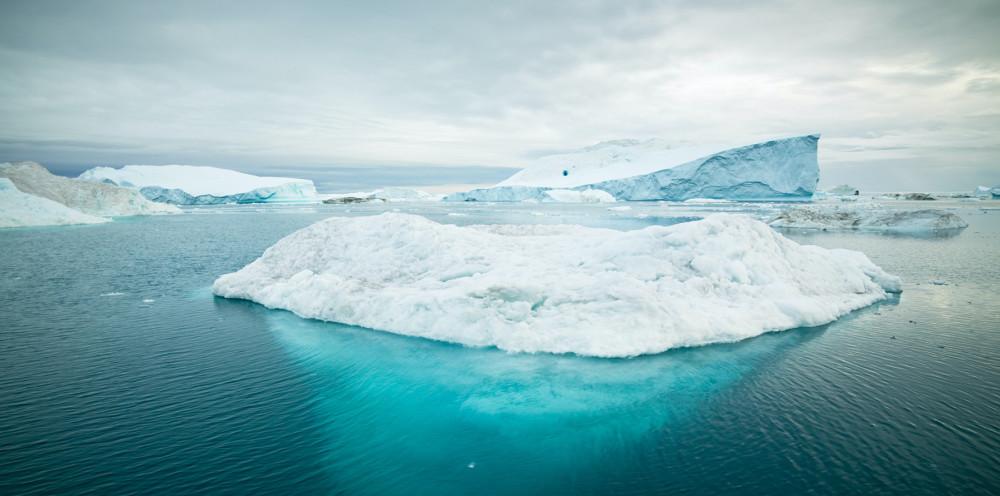1200 square kilometers, how big is this? It is larger than the urban built-up area of Shenzhen.
The area of Shenzhen is 1997 square kilometers, and the built-up area is about 1000 square kilometers, which shows that 1200 square kilometers is still a very large place. And it is such a big place, and it disappears in an instant. In fact, it is not accurate to say "place", this 1200 square kilometers is actually a huge ice shelf, an ice shelf located in the "cold region" of Antarctica. Of course, the entire Antarctic is very cold, and in Southeast Antarctica it is even colder, so scientists often refer to this region as the "cold region" of Antarctica. There is a glacier in Southeast Antarctica that has existed for thousands of years, and we named it "GlenzeConger Glacier", and the 1200 square kilometer ice shelf that collapsed this time belongs to this glacier.

Ice shelf collapse on the Antarctic continent has long been nothing new since the Earth began to heat up, but it is the first time that an ice shelf collapse has occurred in the "cold region" of East Antarctica, and strictly the first time in the history of meteorological records.
1200 square kilometers, is indeed a big piece of ice, but the size of the collapsed ice shelf is actually not important, and the place where it occurs is the most important, we often say: "With the first time, there is a second time", so does this ice shelf collapse mean that more ice shelf collapses will occur in the coldest part of the Antarctic? Global warming caused by the greenhouse effect has long been an indisputable environmental problem, and the main reason for this is the increase in carbon emissions from the use of fossil fuels, all of which can be traced back to 1900.
The more than 100 years since 1900 has been the fastest growing period of human civilization, and the faster the development of civilization, the greater the demand for energy, so the use of fossil fuels has also increased significantly during this period, and the direct consequence is the increase in carbon dioxide emissions, which has worsened significantly after 1970.
Fortunately, human beings are gradually beginning to realize the seriousness of this problem, so they have introduced policies to reduce the emission of greenhouse gases such as carbon dioxide. Although it is no longer possible to completely curb the trend of global warming in terms of the general environment, human efforts have achieved some results, especially in 2020, global carbon dioxide emissions have fallen by 5.8%, unfortunately, the year since then there has been another rebound.
Since global warming is "global" in nature, every corner of the natural earth will be affected, and Antarctica is no exception.
However, in the past, the affected areas did not include the "cold regions" of Antarctica, so scientists have proudly called the glaciers in Antarctica "Earth's climate stabilizers". In fact, this time the collapse of the Antarctic East Antarctic ice shelf is not without warning, before that, there was an increase in temperature in the East Antarctic region, taking the Antarctic Kunlun Expedition Station on the mainland as an example, according to the record, in just 4 days, the recorded temperature increased by 38.1 ° C, in the same period in previous years, the average temperature of the Antarctic Kunlun Expedition Station was about minus 60 ° C, and this time it reached minus 26.3 ° C. Now it seems that the collapse of the ice shelf must be related to the previous abnormal increase in temperature.
For ordinary people, Antarctica is a remote and barren region, and the collapse of one or two ice shelves in this barren area seems to have nothing to do with themselves, but it is not.
The reason why Antarctic glaciers are called "Earth's climate stabilizers" is because it has a good heat absorption and heat storage function, which can emit a large amount of solar radiation, and once the glacier melts, then the solar reflectivity in the Antarctic region will be correspondingly reduced, which will inevitably further promote the rise of global temperature, so it will fall into a vicious circle, if the Antarctic glacier collapses and melts in a large area, then the sea level rise caused by it will bring immeasurable ecological problems. Of course, saying this is not for sensationalism, the collapse and melting of Antarctic glaciers is not an overnight thing, when we should also take precautions, starting from ourselves, energy saving and emission reduction.
We don't have the ability to change too many things, but we can start with ourselves and gradually influence the world.
Some people may wonder whether energy conservation and emission reduction in daily life are really useful? The answer is yes. According to carbon emission statistics, electricity production and industrial production account for about half of the total emissions, while activities related to agricultural production account for about 10%. That is to say, the remaining 40% of carbon emissions are generated in daily life, according to statistics, transportation accounts for 25%, while commercial housing accounts for 13%, so if everyone can start from themselves, energy saving and emission reduction, at least reproduce the glory of 2020 is no problem, that year, the global carbon dioxide emissions fell by 5.8%.